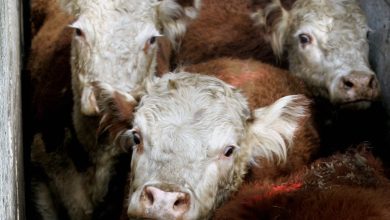Savannah Cats: Facts, Details, and Breed Guide – Litter-Robot
Owning a domesticated Savannah cat may be the closest thing to keeping a pet bobcat. but not all savannah cats are equal in terms of their wild lineage. learn more about “affiliate” classifications on savannah cats, whether an “f1” savannah cat is considered dangerous, as well as other wild facts about this exotically beautiful (and expensive) cat breed.
savannah cats are bred from African servals

the savannah cat developed in the usa. uu. in 1986 after breeders crossed a domestic Siamese cat with a male African serval.
African servals are primarily solitary wildcats. They are widespread in sub-Saharan countries, weighing between 20 and 40 pounds, with a carnivorous diet consisting mainly of rodents, small birds, frogs, insects, and reptiles. According to Wildcats of the World (University of Chicago Press), servals can purr, chirp, hiss, cluck, growl, snarl, and meow.
Other spotted cat breeds that contributed to today’s Savannah cat include the Bengal, Egyptian Mau, Oriental Shorthair, and Domestic Shorthair Tabby.
characteristics of the savannah cat breed
Savannah cats typically have a mottled brown, tan, or gold coat; silver; and colors black or black smoke. other “diluted” coat colors and patterns found in the savannah include rosette, marbled, point, blue, tan, chocolate, and lilac (lavender).
characteristics of the serval most commonly found in savannah cats include:
- color markings, including black or dark “teardrop” or “cheetah tear” markings that extend from the corner of the eyes down the sides of the nose to the whiskers
- ears high, wide, rounded and erect with ocelli on the back
- very long legs, with a rear end that is usually higher than their shoulders when standing
- small heads that are taller than wide; long, slender necks; and fat, swollen noses
- droopy eyes that are green, brown, gold, or a mixed shade
- short tails with black rings and a solid black tip
- alaska: f4 and later allowed
- colorado: f4 and later allowed
- delaware: not allowed without permission
- georgia: illegal property
- hawaii: illegal property
- idaho: not allowed without permission
- iowa: f4 and later allowed
- massachusetts: f4 and later allowed
- nebraska: illegal property
- new hampshire: f4 and later allowed
- new york: f5 and later allowed
- rhode island: illegal property
- texas: varies by county
- vermont: f4 and later allowed
f1 savannah cats are 50% “wild”
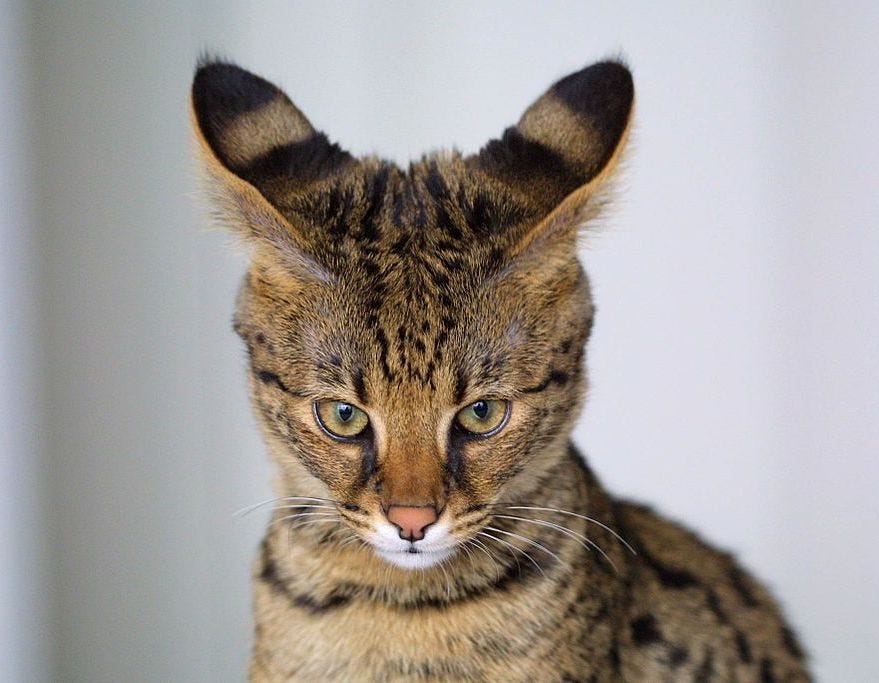
“f” represents the savannah cat’s “filial” rating, specifically, how many generations separate it from the African serval that particular cat has. in the case of an f1 savannah cat, the higher number, you’re looking at a first generation domestic savannah.
The savannah f1 cat is considered 50% wild. as the filial number (f2, f3) increases, the amount of wild blood (serval dna) decreases.
Because there is a significant difference in gestation periods between the African serval (75 days) and a domestic cat (65 days), fi savannah cats are considered very difficult to breed. there are also incompatibilities between the sex chromosomes of each species.
Are savannah f1 cats dangerous?
if these cats are 50% feral, does that mean they are potentially dangerous? Savannah F1 cats are not considered dangerous to humans. however, because they retain strong hunting instincts, they can pose a danger to smaller household pets such as rodents, birds, and fish. (But really, any domestic cat could pose a threat to these species!)
savannah f1 cats are the tallest (and one of the largest) cat breeds
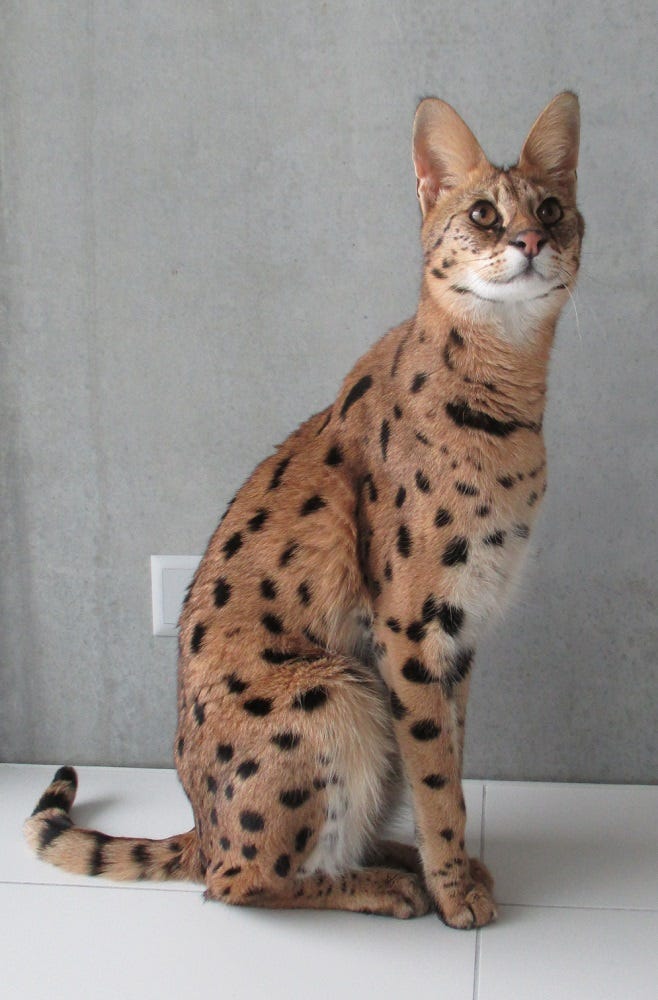
As one of the largest cat breeds, Savannah cats can weigh around 25 pounds. According to the Guinness Book of World Records, Savannah cats have held the title of tallest domestic cat in recent years – one was 19.05 inches tall! Considering that African servals are between 21 and 24 inches tall, it’s impressive that the domestic cat almost “keeps up” with its wild parent.
savannah cats have incredible jumping abilities
Savannah Cat’s height lends itself to its amazing jumping abilities, reaching up to 8 feet in the air! Savannah cats have been known to frequent high places, jumping on cabinets, doors, refrigerators, and just about anything else they can reach for.
they are also one of the longest-lived cat breeds
with a savannah cat, you’ll have a friend for a long time: this breed is slow to mature, sometimes living 20 years or more.
diet for savannah cats
All cats need a diet rich in animal protein, especially since cats cannot synthesize the essential amino acid taurine. Without enough taurine in their diet, cats are likely to develop a heart condition known as dilated cardiomyopathy, experience vision problems, contract UTIs, and have other health problems. Savannah cats are no different; and in fact, most breeders agree that Savannahs need more taurine than the average house cat. taurine supplements are recommended to be added to any type of food.
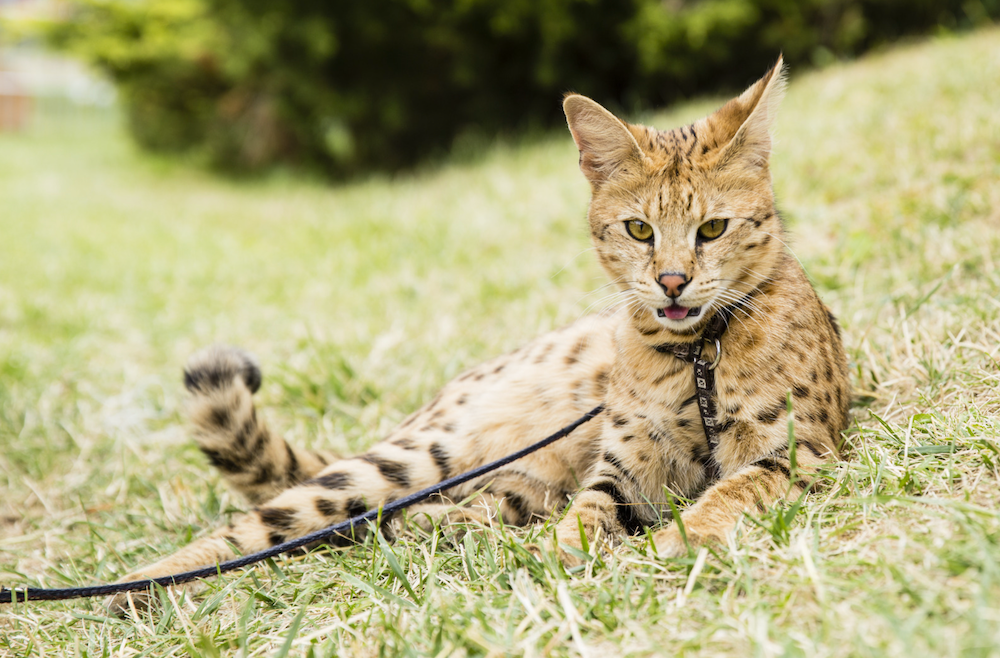
savannah f1 cats can sell for up to $20,000
This domesticated bobcat comes at a price: depending on the filial classification, Savannah cats typically sell for between $1,000 and $20,000. As the most exotic breed, Savannah F1 cats make up the majority of that higher price threshold. this is probably related to the difficulty of producing f1 savannah cats, as mentioned above.
f1 savannah cats are illegal in more than 10 states
although savannah f1 cats are not considered dangerous to humans, some cats in the us. uu. states have prohibited owning one. the following states do not allow these cats or require permits:
they are very intelligent and energetic
You need to be able to spend a lot of time with a Savannah cat – they are very energetic cats that require a lot of exercise, play and interaction. they are extremely intelligent, sometimes said to “play tricks” on their humans.
in fact, savannah cats can be too smart for their own good: they can learn to open doors and cupboards, among other troublesome situations.
Like other cat breeds, early exposure to people and other pets is critical to raising a friendly Savannah cat. Savannah kittens need to be cuddled and played with frequently. However, when you bring home a new Savannah cat, be sure to slowly introduce it to other pets in the house, such as dogs and cats. (it’s best not to introduce small pets like rodents and birds, potentially viewed as prey, not at all!)
A savannah cat’s size and energy level can intimidate even the most laid-back cat or dog in the house. Quarantine your savannah from other pets and slowly start exchanging scents. After a few weeks (not days!), allow your pets to interact under supervision. do not leave your pets alone together until you have supervised them for a long period of time.
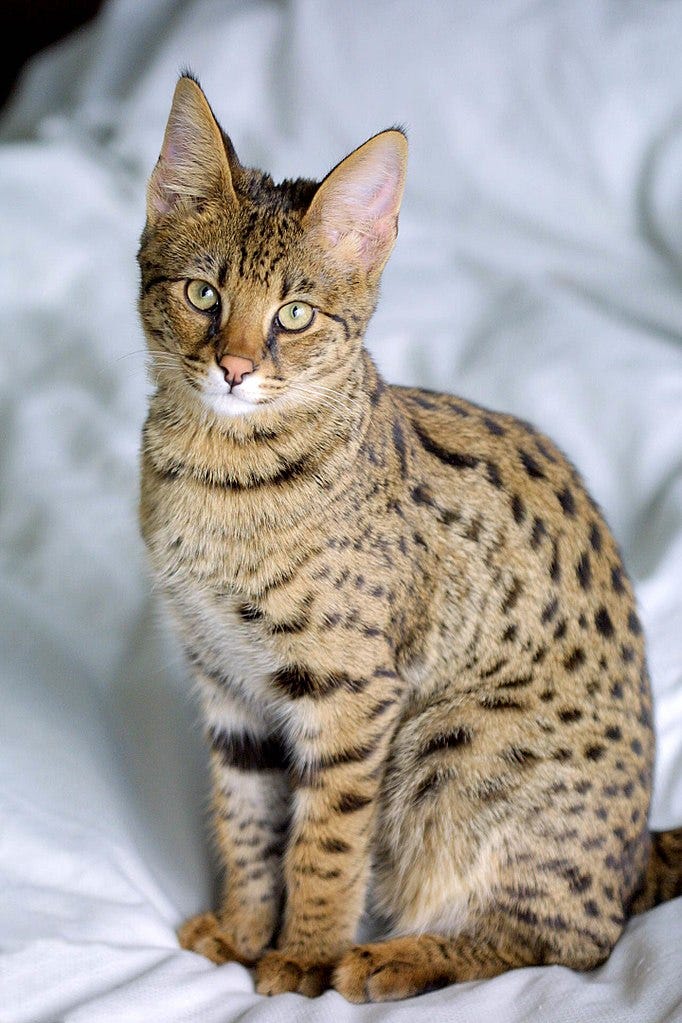
these cats act more like dogs!
Savannah cats are known to be doglike in their loyalty, often following their humans around the house. they also like to walk on a leash outdoors. Before you head out for a walk in your savannah, just make sure you outfit them with a detachable collar with ID tags and that they are microchipped.
they like water
Perhaps because their parent breed, the serval, prefers areas near bodies of water, such as wetlands and savanna, savannah cats enjoy water! you might find them jumping in the shower with you, or even swimming in a small body of water outside. On the other hand, you may notice with frustration that your Savannah cat likes to stir his water bowls until they’re empty. in this case, a cat water fountain may be the best way to ensure your kitty stays hydrated!
which of these facts surprised you the most about savannah f1 cats?

